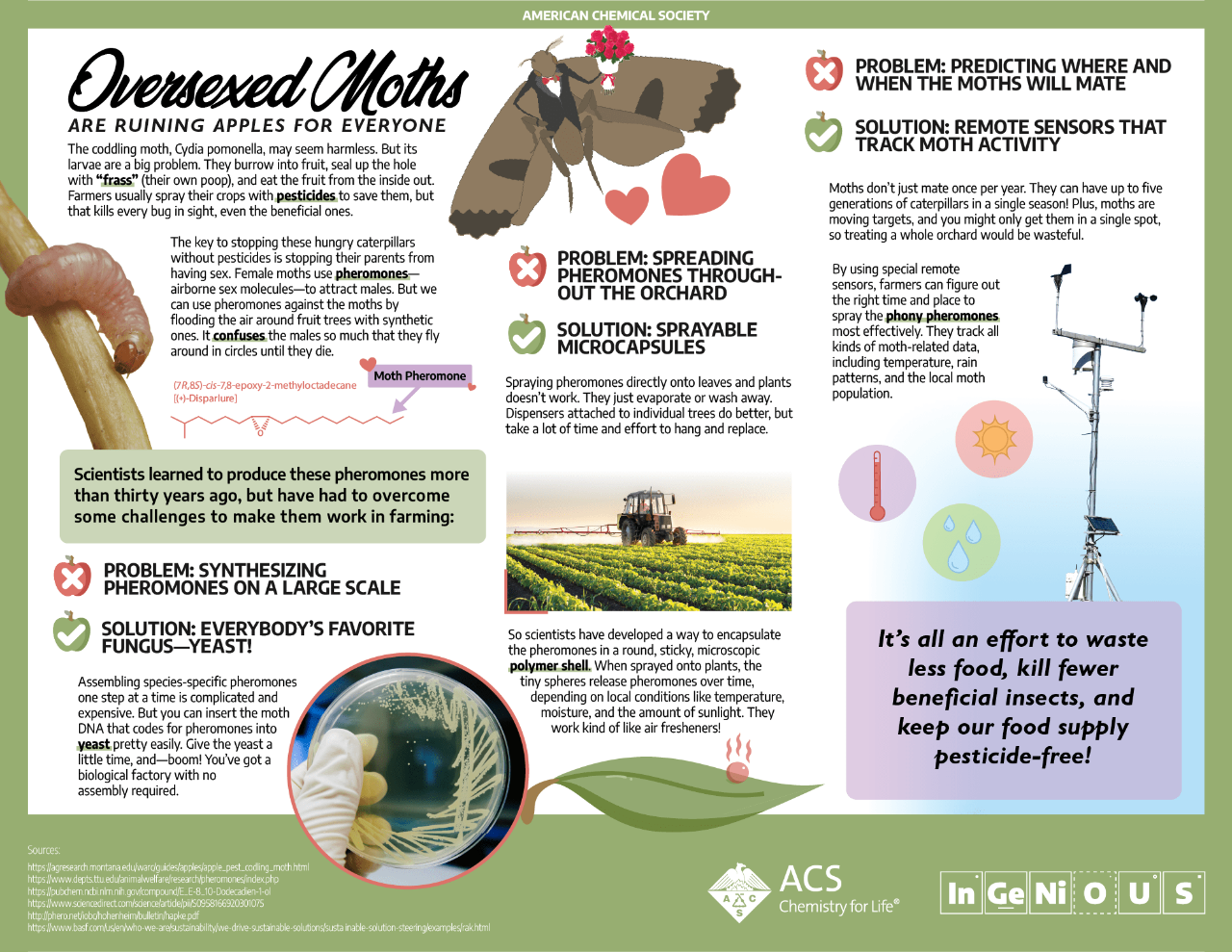Oversexed Moths Are Ruining Apples for Everyone
The coddling moth, Cydia pomonella, may seem harmless. But its larvae are a big problem. They burrow into fruit, seal up the hole with “frass” (their own poop), and eat the fruit from the inside out. Farmers usually spray their crops with pesticides to save them, but that kills every bug in sight, even the beneficial ones.
The key to stopping these hungry caterpillars without pesticides is stopping their parents from having sex. Female moths use pheromones—airborne sex molecules—to attract males. But we can use pheromones against the moths by flooding the air around fruit trees with synthetic ones. It confuses the males so much that they fly around in circles until they die.
[Caption] (7R,8S)-cis-7,8-epoxy-2-methyloctadecane[(+)-Disparlure]
Moth Pheromone
Scientists learned to produce these pheromones more than thirty years ago, but have had to overcome some challenges to make them work in farming:
Problem: Synthesizing pheromones on a large scale
Solution: Everybody’s favorite fungus—yeast!
Assembling species-specific pheromones one step at a time is complicated and expensive. But you can insert the moth DNA that codes for pheromones into yeast pretty easily. Give the yeast a little time, and—boom! You’ve got a biological factory with no assembly required.
Problem: Spreading pheromones throughout the orchard
Solution: Sprayable microcapsules
Spraying pheromones directly onto leaves and plants doesn’t work. They just evaporate or wash away. Dispensers attached to individual trees do better, but take a lot of time and effort to hang and replace.
So scientists have developed a way to encapsulate the pheromones in a round, sticky, microscopic polymer shell. When sprayed onto plants, the tiny spheres release pheromones over time, depending on local conditions like temperature, moisture, and the amount of sunlight. They work kind of like air fresheners!
Problem: Predicting where and when the moths will mate
Solution: Remote sensors that track moth activity
Moths don’t just mate once per year. They can have up to five generations of caterpillars in a single season! Plus, moths are moving targets, and you might only get them in a single spot, so treating a whole orchard would be wasteful.
By using special remote sensors, farmers can figure out the right time and place to spray the phony pheromones most effectively. They track all kinds of moth-related data, including temperature, rain patterns, and the local moth population.
It’s all an effort to waste less food, kill fewer beneficial insects, and keep our food supply pesticide-free!
Sources:
- https://agresearch.montana.edu/warc/guides/apples/apple_pest_codling_moth.html
- https://www.depts.ttu.edu/animalwelfare/research/pheromones/index.php
- https://pubchem.ncbi.nlm.nih.gov/compound/E_E-8_10-Dodecadien-1-ol
- https://www.sciencedirect.com/science/article/pii/S0958166920301075
- http://phero.net/iobc/hohenheim/bulletin/hapke.pdf
- https://www.basf.com/us/en/who-we-are/sustainability/we-drive-sustainable-solutions/sustainable-solution-steering/examples/rak.html






